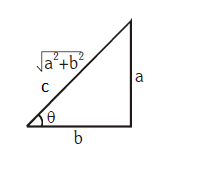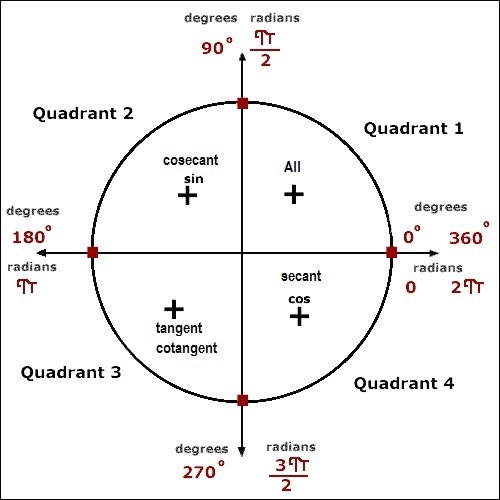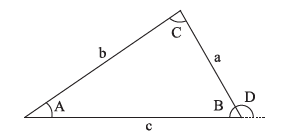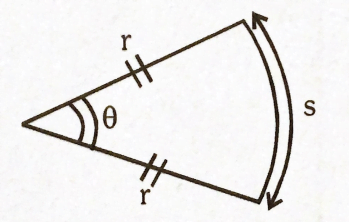Basic Mathematics
Quadratic Equation
Roots of ax2+bx+c=0 are x=−b±√b2−4ac2a
Sum of roots x1+x2=−ba;
Product of roots x1x2=ca
For real roots, b2−4ac≥0
For imaginary roots, b2−4ac<0
Logarithm
log10N=x⇒10x=NlogbN=logba∗logaNlogb1=0,logaa=1logmn=logm+lognlogmn=logm−lognlogmn=nlogmloge m=2.303log10 mlog2=0.3010log3=0.4771Logarithmic Expansion
ln(1+x)=x−12x2+13x3−…(|x|<1)Arithmetic progression-AP
a,a+d,a+2d,a+3d,……a+(n−1)d, here d= common difference
Sum of n terms Sn=n2[2a+(n−1)d], nth term: an=a+(n−1)d
(i) 1+2+3+4+5…+n=n(n+1)2
(ii) 12+22+32+…+n2=n(n+1)(2n+1)6
(iii) 13+22+32+…+n3=[n(n+1)2]2
Binomial Theorem
(1+x)n=1+nx+n(n−1)2x2+n(n−1)(n−2)6x3+…
(1−x)n=1−nx+n(n−1)2x2−n(n−1)(n−2)6x3+……(x2<1)
(1−x)−n=1–nx1!+n(n+1)x22!+…..(x2<1)
If x<<1 then (1+x)n≈1+nx&(1−x)n≈1−nx
Exponential Expansion
ex=1+x+x22!+x33!+……Trigonometric Expansion (θ in radians)
sinθ=θ−θ33!+θ55!−….cosθ=1−θ22!+θ44!−….tanθ=θ+θ33+2θ515−….Componendo and dividendo theorem
If pq=ab then p+qp−q=a+ba−bGeometrical progression-GP
a,ar,ar2,ar3,…… here, r=common ratio, nth term, an=a⋅rn−1
Sum of n terms Sn=a(1−rn)1−r
Sum of ∞ terms S∞=a1−r [where |r|<1 ]
Trigonometry

Pythagorean Theorem: In this right triangle, a2+b2=c2
2π radian =360∘⇒1rad=57.3∘sinθ= perpendicular hypotenuse cosθ= base hypotenuse tanθ= perpendicular base cotθ= base perpendicular secθ= hypotenuse base cosecθ= hypotenuse perpendicular sinθ=a√a2+b2cosθ=b√a2+b2tanθ=abcosecθ=1sin2secθ=1cos2θcotθ=1tan2θsin2θ+cos2θ=11+tan2θ=sec2θ1+cot2θ=cosec2θ

θ0∘(0)30∘(π/6)45∘(π/4)60∘(π/3)90∘(π/2)120∘(2π/3)135∘(3π/4)150∘(5π/6)180∘(π)270∘(3π/2)360∘(2π)sinθ0121√2√321√321√2120−10cosθ1√321√2120−12−1√2−√32−101tanθ01√31√3∞−√3−1−1√30∞0
sin(90∘+θ)=cosθsin(180∘−θ)=sinθsin(−θ)=−sinθsin(90∘−θ)=cosθcos(90∘+θ)=−sinθcos(180∘−θ)=−cosθcos(−θ)=cosθcos(90∘−θ)=sinθtan(90∘+θ)=−cotθtan(180∘−θ)=−tanθtan(−θ)=−tanθtan(90∘−θ)=cotθsin(180∘+θ)=−sinθsin(270∘−θ)=−cosθsin(270∘+θ)=−cosθsin(360∘−θ)=−sinθcos(180∘+θ)=−cosθcos(270∘−θ)=−sinθcos(270∘+θ)=sinθcos(360∘−θ)=cosθtan(180∘+θ)=tanθtan(270∘−θ)=cotθtan(270∘+θ)=−cotθtan(360∘−θ)=−tanθ
sine law

Trlangles
Angles are A,B,C
Opposite sides are a,b,c
Angles A+B+C=180∘
sinAa=sinBb=sinCc
c2=a2+b2−2abcosC
Exterior angle D=A+C
cosine law
cosA=b2+c2−a22bc,cosB=c2+a2−b22ca,cosC=a2+b2−c22abFor small θ
sinθ≈θcosθ≈1tanθ≈θsinθ≈tanθDifferentiation
y=xn→dydx=nxn−1y=ℓnx→dydx=1x
y=sinx→dydx=cosxy=cosx→dydx=−sinx
y=eαx+β→dydx=αeαx+βy=uv→dydx=udvdx+vdudx
y=f(g(x))⇒dydx=df(g(x))dg(x)×d(g(x))dx
y=k( constant )⇒dydx=0
y=uv⇒dydx=vdudx−udvdxv2
Integration
C= Arbitrary constant, k= constant
∫f(x)dx=g(x)+C
ddx(g(x))=f(x)
∫kf(x)dx=k∫f(x)dx
∫(u+v+w)dx=∫udx+∫vdx+∫wdx
∫exdx=ex+C
∫xndx=xn+1n+1+C,n≠−1
∫1xdx=lnx+C
∫sinxdx=−cosx+C
∫cosxdx=sinx+C
∫eαx+βdx=1αeαx+β+C
∫(αx+β)ndx=(αx+β)n+1α(n+1)+C
Definite Integration
∫baf(x)dx=|g(x)|ba=g(b)−g(a)
Area under the curve y=f(x) from x=a to a=b is
A=∫baf(x)dx
Maxima & Minima of a function y=f(x)
For maximum value dydx=0&d2ydx2=−ve
For minimum value dydx=0&d2ydx2=+ve
Average of a varying quantity
If y=f(x) then ⟨y⟩=ˉy=∫x2x1ydx∫x2x1dx=∫x2x1ydxx2−x1Formulae For Determination Of Area
Area of a square =( side )2
Area of rectangle = length × breadth
Area of a triangle =12× base × height
Area of a trapezoid =12×( distance between parallel sides )×( sum of parallel sides )
Area enclosed by a circle =πr2(r= radius )
Surface area of a sphere =4πr2 ( r= radius )
Area of a parallelogram = base × height
Area of curved surface of cylinder =2πrℓ, where r= radius and ℓ= length
Area of whole surface of cylinder =2πr(r+ℓ) where ℓ= length
Area of ellipse =πab, (a & b are semi-major and semi-minor axis respectively)
Surface area of a cube =6( side )2
Total surface area of a cone =πr2+πrℓ
where πrℓ=πr√r2+h2= lateral area

Arc length s=r.θ
Area of sector =r2θ2
Plane angle, θ=sr radian
Solid angle, Ω=Ar2 steradian
Formulae for Determination of Volume
Volume of a rectangular slab= length × breadth × height
=lwh
Volume of a cube =( side )3
Volume of a sphere =43πr3 (r= radius)
Volume of a cylinder =πr2ℓ
( r= radius and ℓ= length)
Volume of a cone =13πr2h
( r= radius and h= height )
Key Points to Remember
To convert an angle from degree to radian, we have to multiply it by π180∘ and to convert an angle from radian to degree, we have to multiply it by 180∘π.
By help of differentiation, if y is given, we can find dydx and by help of integration, if dydx is given, we can find y.
The maximum and minimum values of the function
Acosθ+Bsinθ are √A2+B2 and −√A2+B2 respectively. (a+b)2=a2+b2+2ab(a−b)2=a2+b2−2ab(a+b)(a−b)=a2−b2(a+b)3=a3+b3+3ab(a+b)(a−b)3=a3−b3−3ab(a−b)